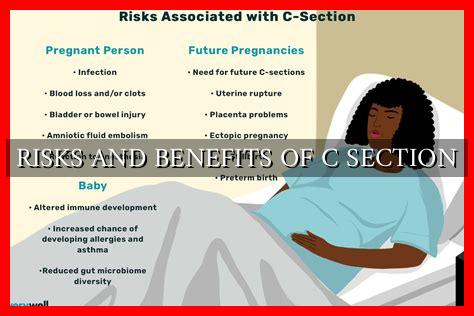-
Table of Contents
Risks and Benefits of C-Section
Introduction
Caesarean section, commonly known as C-section, is a surgical procedure used to deliver a baby through incisions in the mother’s abdomen and uterus. While C-sections can be life-saving in certain situations, they also come with risks and benefits that expectant mothers should be aware of. In this article, we will explore the risks and benefits of C-sections in detail.
Risks of C-Section
1. Infection
One of the primary risks associated with C-sections is the potential for infection. The incision made during the surgery can become infected, leading to complications for both the mother and the baby. According to the American College of Obstetricians and Gynecologists, the risk of infection after a C-section is higher than with vaginal delivery.
2. Blood Loss
Another risk of C-section is excessive blood loss during the surgery. While medical professionals take precautions to minimize blood loss, it can still occur, leading to the need for blood transfusions and other interventions to stabilize the mother’s condition.
3. Longer Recovery Time
Compared to vaginal delivery, C-sections typically require a longer recovery time for the mother. The surgical incision needs time to heal, and mothers may experience pain and discomfort during the recovery period. This can impact their ability to care for their newborn and resume normal activities.
Benefits of C-Section
1. Emergency Situations
One of the primary benefits of C-section is its ability to save lives in emergency situations. If complications arise during labor, such as fetal distress or placental abruption, a C-section can be performed quickly to ensure the safety of both the mother and the baby.
2. Planned Delivery
In some cases, C-sections are planned in advance for medical reasons. For example, if a mother has a medical condition that makes vaginal delivery risky, a C-section may be scheduled to reduce the likelihood of complications during childbirth.
3. Reduced Risk of Pelvic Floor Disorders
Some studies suggest that women who deliver via C-section may have a lower risk of developing pelvic floor disorders, such as urinary incontinence and pelvic organ prolapse, compared to those who deliver vaginally. This can have long-term benefits for the mother’s health and quality of life.
Conclusion
While C-sections can be a life-saving procedure in certain situations, they also come with risks that expectant mothers should consider. It is important for women to discuss their options with their healthcare provider and weigh the potential benefits and risks of C-section before making a decision. By being informed and proactive, mothers can make the best choice for themselves and their babies.


